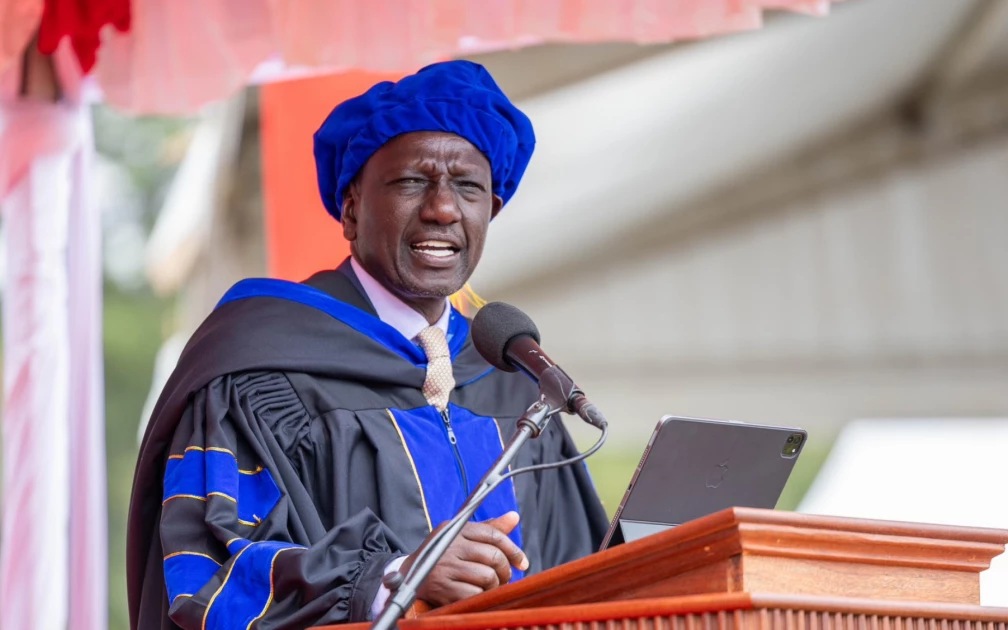Explained: How Kenya's new 'banding' university funding model works

President William Ruto speaks at the University of Eastern Africa, Baraton's 42nd graduation ceremony in Nandi, August 18, 2024. | PHOTO: PCS
President William Ruto on Sunday promised to ensure that the most vulnerable in society will not be disadvantaged, saying the ministry will increase funding for scholarships and loans for extremely needy students from 80 to 95 per cent.
The president’s pronouncement, however,
comes as the ministry begins implementing the reviewed categorisation of students'
financial aid needs.
The ministry has reviewed the banding using
what they term as an improved means testing instrument that pays close
attention to the socio-economic indicators of the student’s environment
including household income, geographic location, poverty levels, number of
dependants in the student’s family as well as other special circumstances like
disabilities.
The instrument also aims to ensure that the
available resources are equitable while directing the financial aid directory
to the students.
Under the revised means testing instrument,
students seeking financial aid were grouped into five bands depending on the
level of income of a household and their financial needs.
Those in band one are the extremely needy
and vulnerable; this group will receive the bulk of the government aid in terms
of scholarships at 70%, and loans at 25% while the household will contribute
only 5% of the fees.
The student will get upkeep support of Ksh.60,000
shillings.
Those in Band 2 are students coming from low-income
families who require substantial aid. This group will get a 60% scholarship, and
30% in loans while they will have to pay 10% of the fees and get Ksh.55,000 in
upkeep.
The needy students in Band 3, whose families
have modest incomes will get 50% in scholarships, 30% in loans, and Ksh.50,000
as upkeep while they will pay 10% of the fees.
Those in Bands 4 and 5 considered middle
and high-income earners will pay the most of the tuition fees per household at
40 and 20% while the students will get 30% as loans and between Ksh.40,000 and Ksh.45,000
as students upkeep.
While the funding is largely dependent on
the income levels of the household, students with special needs including
orphans or those with disabilities are considered while at the same time, there
will be consideration for affirmative action to ensure that students from
marginalised and vulnerable groups are considered in the classification.
In the meantime, the ministry says with the
guidelines out, they have received applications from 85% of the students who
sat their exams last year and qualified for government funding.
These applications will continue to be
accepted until the end of the year.
However, this new
banding only applies to the 2022 KCSE cohorts, while those who are continuing
students will use the old model of funding that will see close to 40,000
students allocated bursaries this financial year.
Want to send us a story? SMS to 25170 or WhatsApp 0743570000 or Submit on Citizen Digital or email wananchi@royalmedia.co.ke
Comments
No comments yet.


Leave a Comment